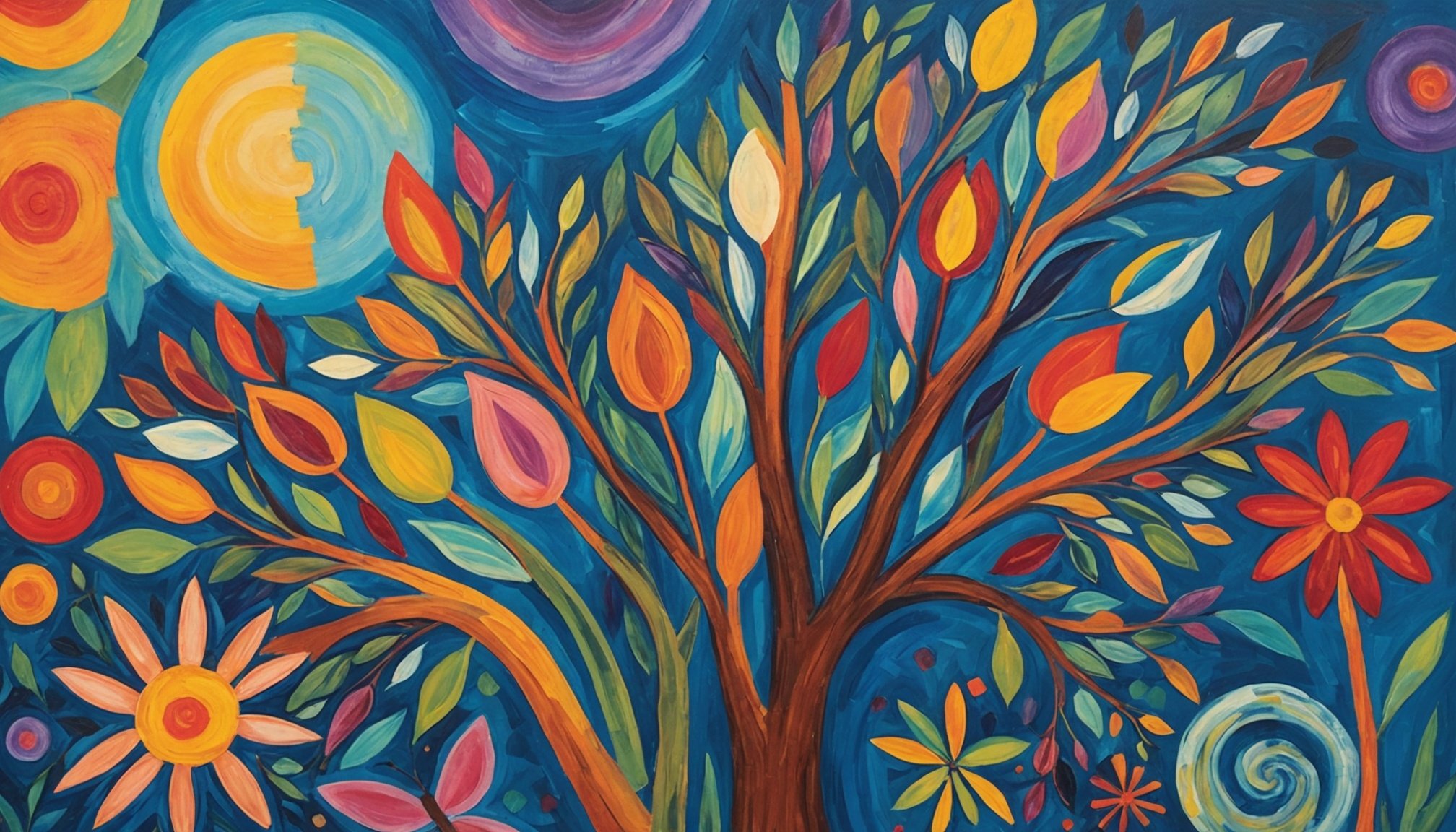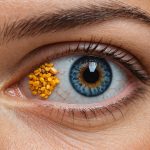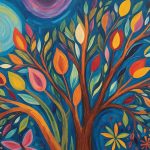Understanding Art Therapy
Art Therapy is a therapeutic practice that harnesses the creative process to enhance mental health. It involves the creation of art as a medium to explore emotions, resolve issues, and manage behaviours. Art Therapy stands on principles that creativity is inherent, fostering healing and growth. Originating in the mid-20th century, it has since evolved into a sophisticated field, often integrated into various therapeutic settings.
Historically, Art Therapy emerged when mental health professionals discovered that the act of creating art helped individuals express themselves in ways words could not. This expressive therapy gained traction as a tool for unlocking emotional barriers, particularly useful for those unable to articulate feelings verbally.
Topic to read : Transform Your Plate: Effective Dietary Changes to Ease Polycystic Ovary Syndrome (PCOS) Symptoms
In substance abuse recovery, Art Therapy plays a pivotal role. It offers a safe, non-judgmental environment where individuals can explore underlying issues contributing to addiction. By engaging in creative activities, patients can gain insights into their behaviours and emotions, facilitating self-discovery and promoting resilience. Art Therapy can also help in reducing stress and the risk of relapse, supporting a holistic recovery journey. Through visual expression, those in recovery can uncover personal strengths and build healthier coping strategies, aiding long-term sobriety.
Techniques Used in Art Therapy
Art therapy harnesses the power of creative expression to facilitate healing and personal growth. Various techniques are employed within this practice, each offering unique benefits and methods of engagement.
Also read : Say goodbye to calluses with an electric callus remover
Expressive Arts
Expressive arts encompass diverse forms of creative expression, allowing individuals to explore their emotions through activities like painting, drawing, and pottery. These activities provide an avenue for emotional release, reducing stress and enhancing mental clarity. By engaging in these therapeutic practices, individuals often gain insights into their feelings and thoughts that may be difficult to articulate verbally.
Guided Imagery
Guided imagery is a technique where individuals visualize calming and peaceful scenes, often facilitated by a therapist. This form of art therapy helps in reducing anxiety and promoting relaxation, allowing participants to tap into their subconscious mind. It is a therapeutic practice that encourages introspection and can be particularly beneficial in addressing trauma-related stress.
Art Journaling
Art journaling combines creative expression with narrative therapy, allowing individuals to document their thoughts and emotions through a combination of drawings and written words. This technique promotes therapeutic practices by providing a private space for reflection and emotional exploration, leading to greater self-awareness and emotional healing.
Benefits of Art Therapy in Recovery
Art therapy offers emotional healing during the delicate phase of recovery. Engaging in creative processes, individuals navigate their emotions more efficiently. Through art, emotional processing becomes a gateway to self-discovery, unveiling deeper insights into one’s feelings and past traumas.
In the realm of substance abuse recovery, art therapy acts as a transformative tool. How does it benefit individuals? By fostering the development of coping mechanisms. Artistic expression allows individuals to explore and express complex feelings without the need for words, enabling a non-verbal outlet for stress and anxiety. As a result, this creativity builds resilience against potential relapse triggers.
Moreover, art therapy enhances self-esteem and strengthens social connections. Participating in group settings can encourage participants to share their creations, which fosters a sense of community and belonging. These interactions support the growth of positive relationships, vital in the journey to recovery.
Ultimately, the benefits of art therapy lie in its ability to promote emotional healing, aiding individuals in substance abuse recovery by nurturing healthier coping skills and fortifying self-worth. As these therapeutic practices are integrated into recovery programs, they transform lives, contributing to long-lasting recovery.
Real-Life Success Stories
In the world of art therapy, success stories offer inspiring insights into personal growth and healing. They serve as vivid testimonials to the transformative power of creative expression in therapy.
Individual Testimonials
Many individuals have shared powerful testimonials about their journey with art therapy. One might find solace in painting or sculpture, enabling them to confront emotions that were once difficult to express verbally. These success stories often highlight breakthroughs in understanding personal struggles, providing a renewed sense of self-worth and clarity. The authenticity of each narrative is unique, painting a picture of emotional release and personal evolution.
Group Therapy Case Studies
Group settings in art therapy foster a shared environment where individuals can connect over common experiences. As participants create together, they find strength in shared healing. Group therapy case studies often reveal how collective art-making encourages camaraderie and resilience, solidifying bonds that aid in recovery. The dynamics within a group setting can amplify therapeutic outcomes, offering testimonials of solidarity and collective growth.
Long-Term Recovery Impact
The impact of art therapy often extends well beyond the conclusion of sessions. Long-term recovery stories highlight sustained improvements in emotional well-being, communication skills, and self-awareness. These accounts frequently underscore the profound, lasting changes art therapy has facilitated, offering compelling evidence for its effectiveness in promoting continuous healing.
Expert Opinions and Statistics
Art therapy is increasingly recognised as a powerful intervention for mental health recovery. Insights from art therapists, who are well-versed in evidence-based practices, highlight its benefits. They emphasize the unique ability of art therapy to engage individuals on a creative level, which can be particularly therapeutic.
Statistics reveal compelling evidence of its efficacy in various recovery settings. A review of several studies shows improved emotional well-being among participants who engage in art therapy. For instance, one study highlighted that over 60% of individuals reported reduced anxiety and stress levels after consistent sessions. These findings underscore the valuable role art therapy plays in facilitating healing and transformation.
Integrating art therapy with traditional recovery methods, such as cognitive-behavioural therapy (CBT), can enhance outcomes for patients. Mental health professionals have observed that combining these approaches allows for a more holistic treatment plan. This integration offers patients a broader range of tools to process their emotions and experiences. Expert insights support this synergy, noting that dual approaches cater to both cognitive and emotional facets, deepening the therapeutic impact. Such strategies not only provide immediate relief but also foster long-term resilience.
Integrating Art Therapy into Recovery Plans
Exploring how to implement art therapy into existing recovery strategies can transform therapeutic goals into a reality. Art therapy, with its unique approach, complements traditional methods and offers individuals a creative outlet to express and heal.
Creating a Personal Art Therapy Plan
Establishing a personal art therapy plan begins with identifying the specific therapeutic goals an individual wishes to achieve. This involves understanding personal challenges and emotional needs. By tailoring activities, such as drawing or painting, to address these areas, the plan becomes a powerful tool in the recovery process. It’s essential that this plan aligns with overall recovery strategies, ensuring each session supports broader therapeutic goals.
Collaborating with Professionals
Collaboration with trained art therapists is crucial. These professionals bring an understanding of how to effectively integrate art therapy into existing treatments. Their insights ensure the use of proper techniques, enhancing the effectiveness of the implementation and guiding individuals through their creative journeys while maintaining focus on therapeutic targets.
Resources and Workshops
A variety of resources and workshops are available to both individuals and professionals, offering step-by-step guides on creating and implementing art therapy plans. These workshops provide essential skills and knowledge, facilitating collaboration between therapists and clients to maximize the benefits of this expressive therapy.











